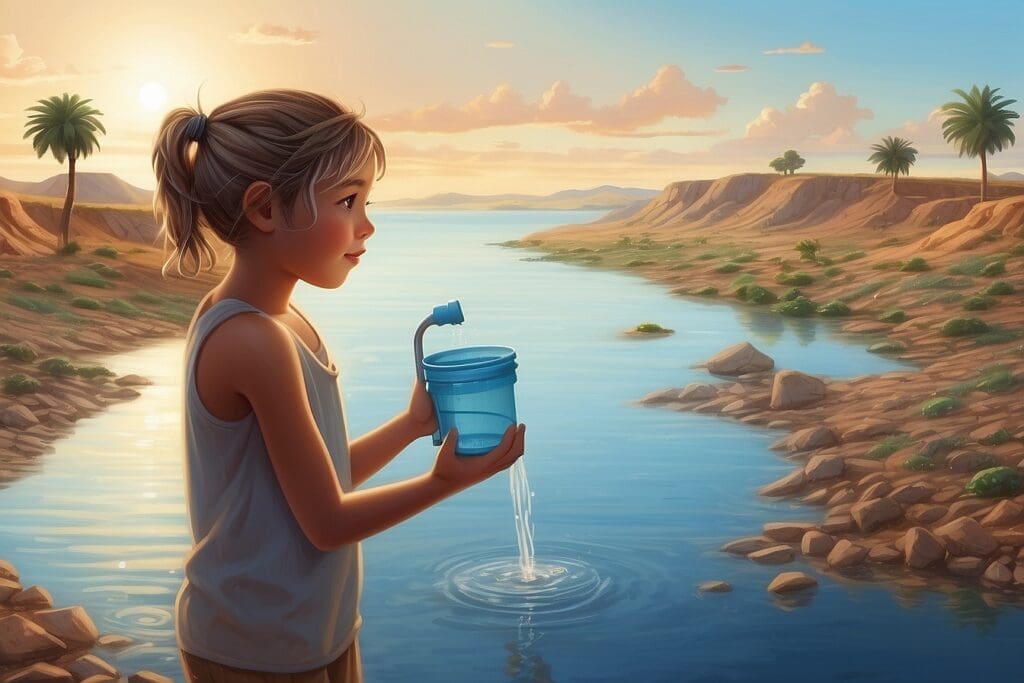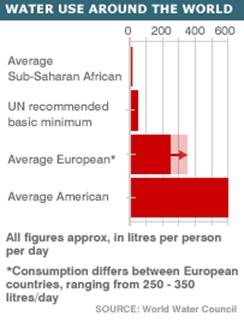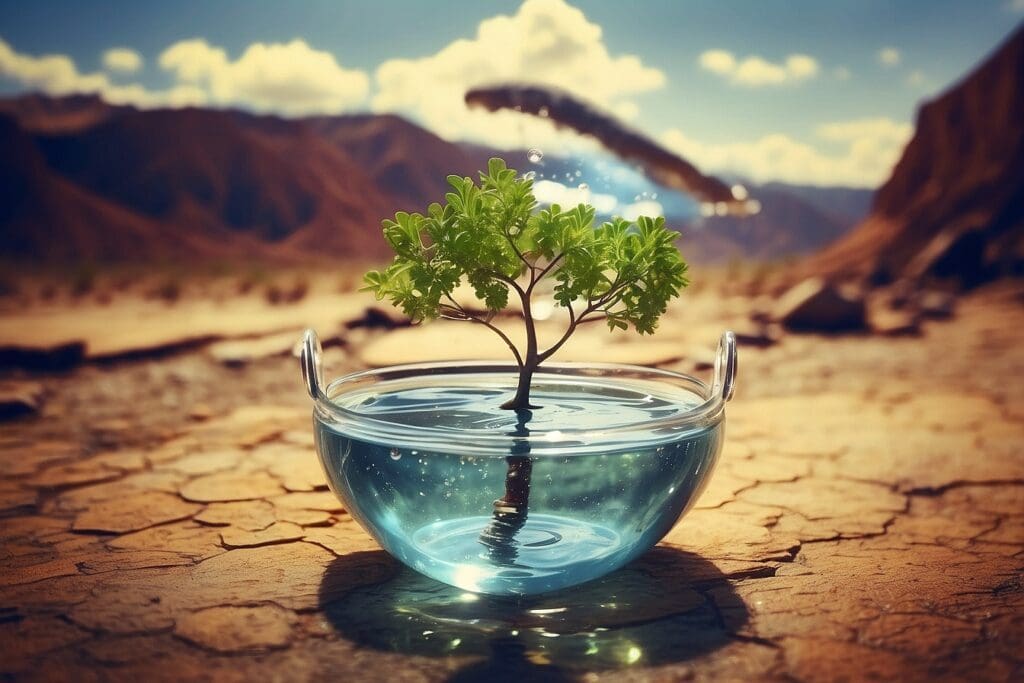Living in the United States, where water is plentiful in most areas, it is often easy to forget that a growing portion of the world’s population faces significant water shortages and a host of related problems. Water is a global resource, and water shortage is a global issue. Even if your community has enough water right now, it is important to understand the larger issue and take action. Your efforts can help to lessen the global impact of this problem, and they can also spare you from experiencing a severe water shortage in the future.
Water Shortage—A Global Issue
The World Health Organization (WHO) recently reported that on each continent, water shortages impact the lives of one in three people. The WHO also found that over a billion people – more than 20% of the global population – face water scarcities in their own communities.1 The basic outline of the problem is simple—the amount of water on the earth remains constant, and has not changed for millions of years. If there is a shortage, it must mean that our water habits are to blame. Indeed, that is the case—as our society advanced, we began to use water at rates far beyond a sustainable level. At the end of the 20th century, we were using water at nine times the rate it was used in the early 1900s. During that same period, the global population only increased by a factor of four.2
The problem would be bad enough if current water usage levels were stable, but unfortunately, our water consumption continues to increase. This means that in just the next couple decades millions and millions of people will be directly impacted by water scarcity . The proportion of people living in so-called “water stressed” countries, currently at 1/3, is projected to rise to 2/3 within the next 15 years.4 This is due to both increased water consumption and projected population growth. If water use per person were held constant, we would still be facing problems due to a rapidly rising global population. Some analysts have predicted increases as high as 45% over the next 30 years!5
Effects of Water Shortages

Even without factoring in the growing severity of the water crisis , there are already many problems arising from current water shortages. Countries facing water shortages have seen increased rates of water-borne infections, such as cholera and typhoid fever, which result from drinking unsafe water. And because most of the drinkable water (and some that is not) is being consumed, more and more agricultural areas are using waste water to irrigate their crops—a practice that exposes even more people to the risk of disease.6
Continued agricultural development—and the water necessary to support it—is crucial as the world adapts to support its growing population. About 70% of the water we use is devoted to agriculture, not to individual homes and people.7;8 Therefore, a shortage of water can result not only in less drinkable water, but less food to eat as well, which puts an even greater strain on the current world hunger crisis.
Why Should We Help?
Many people in the U.S. and other developed nations are now asking this question. It is, after all, a valid question when you consider that most Americans are able to access and use water freely with no consequences beyond a monthly water bill. Because it is so easy to ignore the problem, education is an important first step—people in developed nations need to know that their overconsumption has, and will continue to have, drastic effects on their local and global environment.
Moreover, we use too much water! This point is straightforward—people in the U.S. consume far more water than citizens of any other nation in the world. The average American uses hundreds of gallons per day, much of which—despite being safe to drink—is used for flushing toilets, watering lawns, and other non-vital purposes.9 We face a global problem of overconsumption, and it makes sense to fix the problem by starting with those who use the most.
 10
10
Many argue that although we Americans consume more than our fair share, we are lucky to have advanced technology and plentiful water sources that have kept us largely immune to the consequences of water scarcity. This argument may have been true in the past, but it is less true today and will cease being a reality in the coming decades. States across the country, including those with large populations such as New York, Florida and California, have experienced severe droughts in recent years. A government report released in 2007 predicted that more than half the states in the U.S. would struggle with significant water shortages in the very near future.11 Indeed, there are already warning signs, as lakes are shrinking and reservoirs are running low from coast to coast. Jack Hoffbuhr, executive director of the American Water Works Association, summed up the situation with this comment: “Is it a crisis? If we don’t do some decent water planning, it could be.”12
Water Shortage and Climate Change
The growing population and increasing water consumption within the United States contribute not only to a draining of our natural resources, but also accelerate the pace of climate change, otherwise referred to as global warming . Water treatment and processing methods are extremely energy-intensive, and they produce an amount of greenhouse gas equivalent to that of 10 million cars.13 Many regions of the U.S. are already starting to feel the effects of global warming and the people living there should understand that their water use habits are directly contributing to the problem, both at home and around the world.
Water Is a Global Resource
Despite all the evidence, many individuals still remain unconvinced by the arguments in favor of reducing water usage. For most U.S. residents, the problem has just not grown large enough to warrant a significant change in lifestyle. But our choices about water use don’t just affect us—they impact everyone around the world.
Tony Allan, a professor at King’s College London, recently introduced the idea of “virtual water.” He defines the term as water that is required to create a product, such as an agricultural crop.14 The water that goes into these products does not stay in the local community, but instead is often transported to other parts of the world. In this way, regions with plentiful water can share that resource with others who lack it.15 But this system of sharing virtual water only works as long as there are producers with easy access to water, which is not just a sufficient amount of water for themselves, but enough to invest in products for sale and trade. The parts of the world that meet these criteria are rapidly shrinking, and this means that fewer water-rich products will be available for water-deprived people.16 It is important to conserve and maintain your local water supply not only for the sake of its future and the future of your community, but because small changes in water availability for you can easily translate into big changes for someone on the other side of the world.
Finally, there is a great deal of “water stress” in the U.S., so the “not in my backyard” thought process just can’t be sustained for much longer. Water stress is a ratio of water usage and water resources, the higher the ratio, the worse off we are.17 By starting to change our water consumption habits now, we can prevent a severe crisis at home, and worry less about our children’s future as well.





